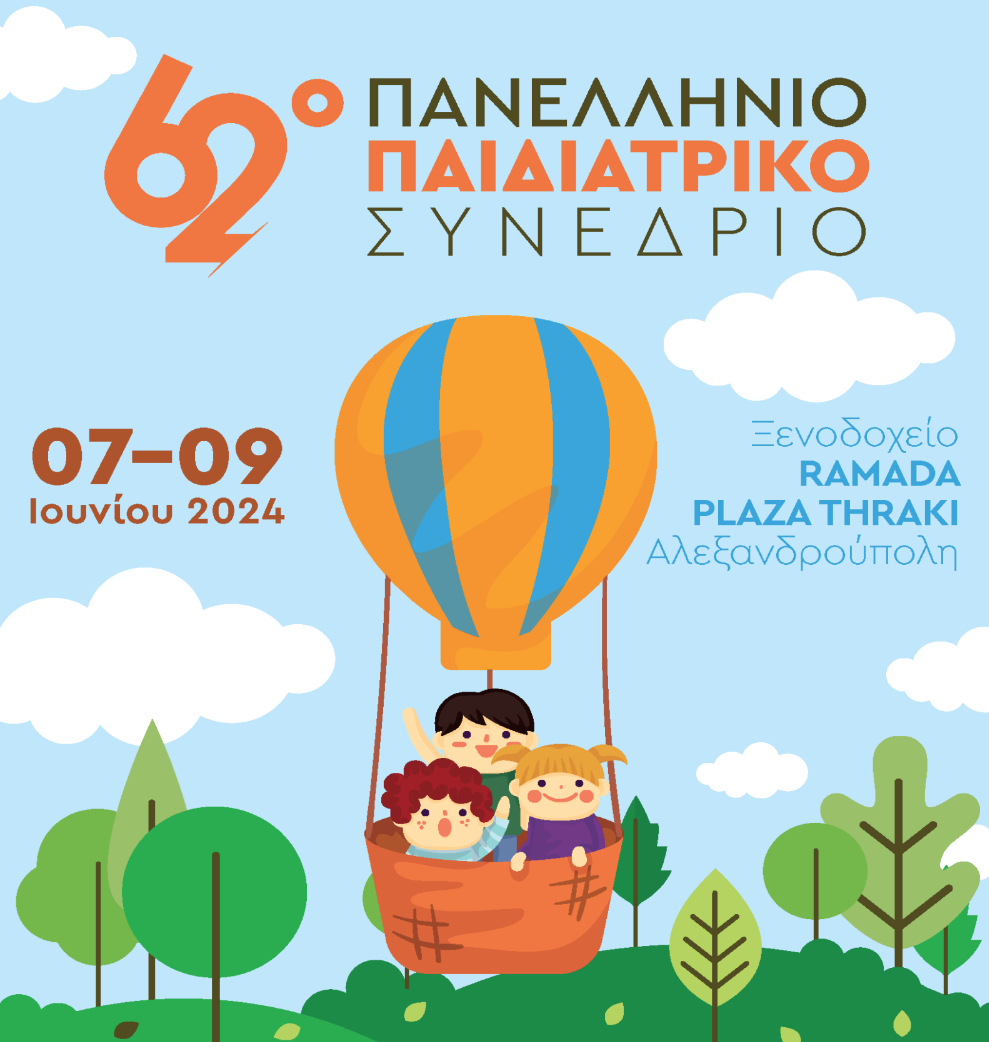 News & Media
News & Media

Silver Sponsorship at the 62nd Panhellenic Pediatric Congress
We had the pleasure and honor to participate as a Silver Sponsor in another Panhellenic Congress for 2024, this time at the 62nd Panhellenic Pediatric Congress organized by the Hellenic Pediatric Society on June 7 - 9, 2024 at the Ramada Plaza Thraki Hotel in Alexandroupolis.
The participation of Prime Biosciences as a Silver Sponsor in such an important scientific conference reflects, on the one hand, the support of healthcare professionals for our products and, on the other hand, the continuous and dynamic presence of our company.
A satellite presentation entitled "Diagnosis and treatment of iron deficiency anaemia in children" was held during the conference. We would like to thank Mr. Elpidophoros Mantadakis, Professor of Pediatrics - Pediatric Hematology / Oncology, Democritus University of Thrace, Head of the Pediatric Clinic of University Hospital of Alexandroupolis, for his excellent speech and the chair of the satellite, Mrs. Lydia Kossiva, Associate Professor of Pediatrics, National and Kapodistrian University of Athens - Children's Hospital "P.&A. Kyriakou".
A large number of physicians listened to Mr. Mantadakis referring to the importance of proper management of iron deficiency (ID) and iron deficiency anaemia (IDA), the methods of diagnosis and the limits of haematological and biochemical markers, providing new data and evidence.
The Professor began by pointing out the neurodevelopmental effects of ID, with a significant impact on children's IQ, while suggesting that Hb<12g/dL and ferritin<18μg/L should be taken as reference values for ID and IDA.
Regarding the risk factors for IDA, among others, "prematurity in infants, exclusive breastfeeding after the 4th month without iron supplementation, intense sports were mentioned, pregnancy and lactation', while obesity was mentioned as an important risk factor for IDA as it increases the expression of hepcidin, which is the regulator of iron absorption in the body, while it is also a chronic inflammatory disease that de facto leads to reduced iron absorption.
Continuing, Mr.Mantadakis spoke extensively about the changes in laboratory parameters, haematological and biochemical indicators, with the deterioration of ID, with important reference to the value of the Mean Corpuscular Volume (MCV) which "is not an early, as many believe, but a late indicator of iron deficiency, which means that Pediatricians should ask for ferritin and CRP (to rule out that a normal ferritin is the result of inflammation and/or infection, since it is an acute phase protein), i.e. look for iron deficiency with biochemical and not just hematological markers".
The Professor also made extensive reference to both the proposed treatment regimens and the available per os Fe formulations for the prevention and treatment of ID and IDA. Regarding prevention dosages, the WHO recommendations were highlighted which specifically are 10-12.5mg/day for infants and children 6-23 months, 30mg/day for children 2-5 years and 30-60mg/day (at least for 3 months per year) for children 5-12 years in areas of the world where there is a severe problem of ID and IDA.
Regarding per os Fe formulations for the treatment of ID and IDA, Mr. Mantadakis noted that the ideal characteristics of a formulation are "easy ingestion, good taste (absence of metallic taste), good bioavailability, absence of tooth colouring and digestive side effects, easy dosing, long shelf life after opening, efficacy and safety (low toxicity)".
The Professor pointed out the excellent effectiveness of carbonyl iron products, which in the Greek market are only available under the name Ingenic Iron MAX and Ingenic junior Iron. Both formulations fully incorporate the "ideal" characteristics as mentioned earlier. Particular emphasis was also placed on the fact that "carbonyl iron has never been reported to cause corrosive injury to the gut, as has been described with iron salts, while exhibiting the lowest toxicity, an issue that is not receiving the necessary attention by health professionals".
Mr. Mantadakis completed his speech by stressing that "the modern trend in the treatment of ID and IDA emphasizes the use of smaller doses of per os iron and the administration once a day for at least 3-6 months" while suggesting to the doctors who attended him, "to prefer, both for the prevention and treatment of ID and IDA, iron formulations with good taste, easy dosage, absence of side effects and safety", characteristics for which Ingenic Iron MAX and Ingenic junior Iron stand out.
Lastly, regarding dosages, Mr. Mantadakis' recommendation is "the administration of 3mg of elemental iron/kg body weight/day with an ideal amount of 60mg of elemental iron per day". In addition, when asked by the audience about his own recommendation for the treatment of ID and IDA, he stated that "given a haemoglobin >8g/dL, he recommends up to 60mg of elemental iron per day, which for Ingenic Iron MAX is 3ml per day, followed by a good shake up, as it is very convenient".
We would like to warmly thank all the doctors for their time and their interest in learning more about our company's products!